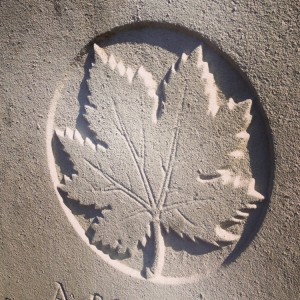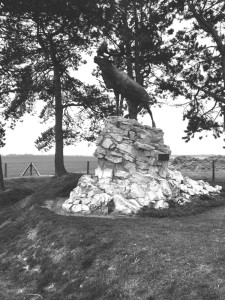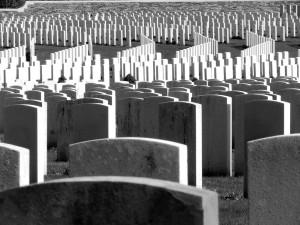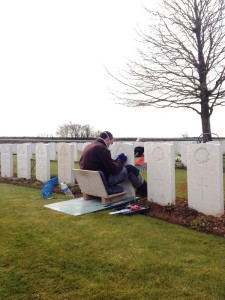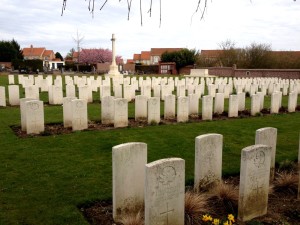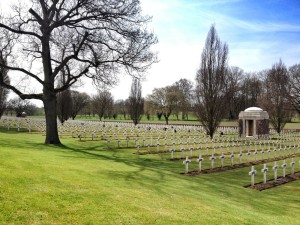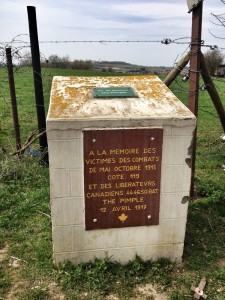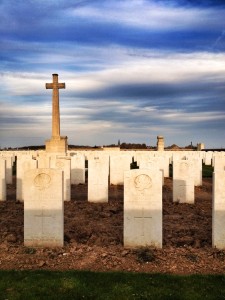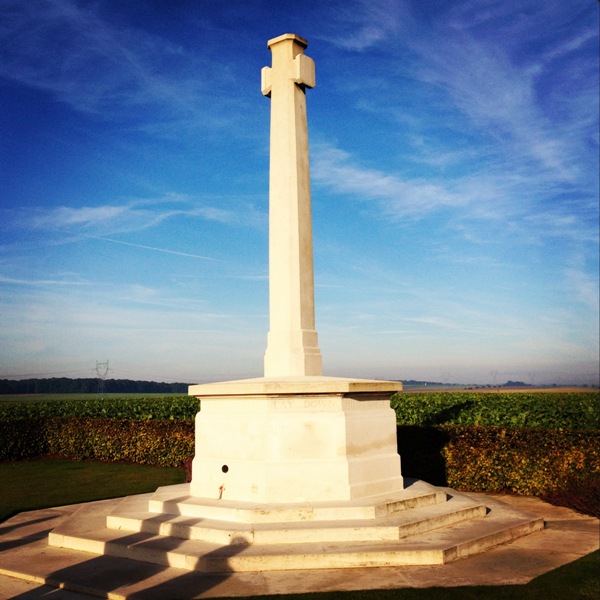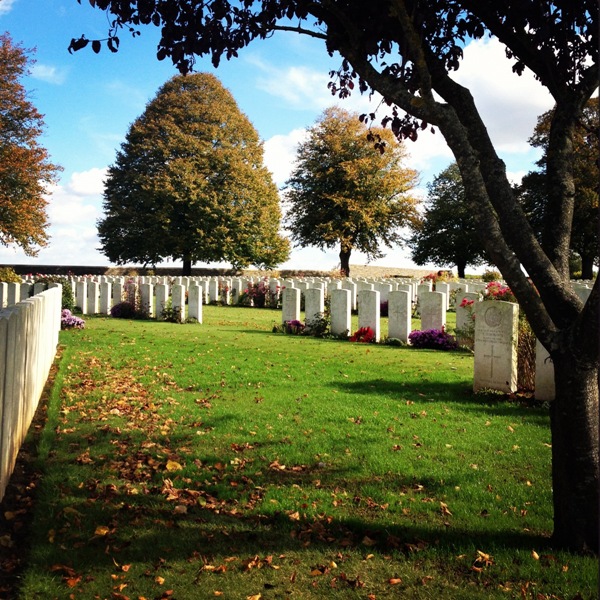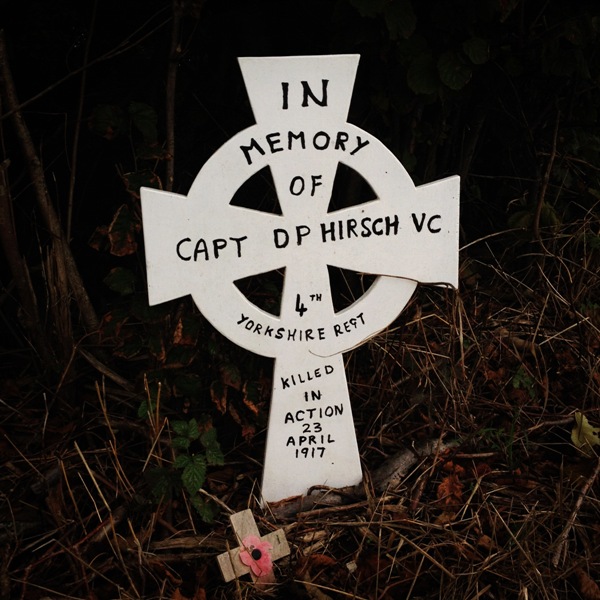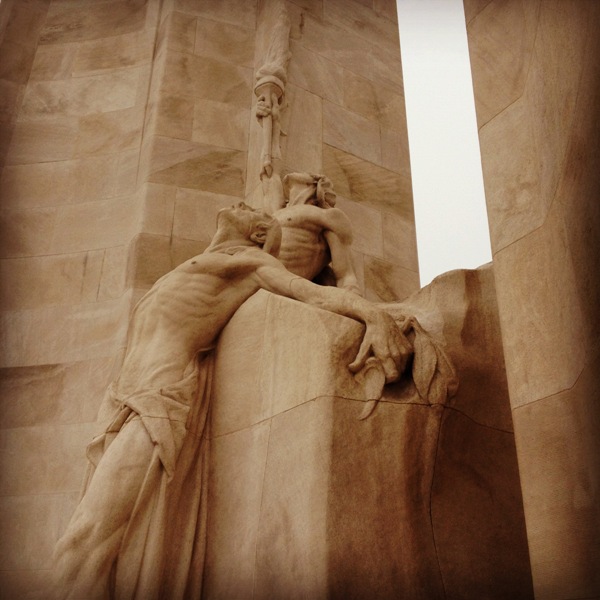Posts Tagged ‘Battlefield Tours’
New Battlefield Tour announced! Western Front Footsteps: Stories of courage and endeavour above and below the battlefield and the postwar reconstruction of French communities, 24-27 September 2021
Following the success of the four years of Bristol and West Country based battlefield tours (2016-19) organised with fellow historian, Clive Burlton, we are pleased to announce another trip for autumn 2021. Our 2020 tour was cancelled due to the coronavirus pandemic, hence we are carrying over our suggested plans for that tour to 2021. Our focus is not solely actions by units from the West Country but on this tour will look at the role of the Tunnelling Companies and their incredible underground war, fought deep beneath No Man’s Land. We will also visit sites and tell stories associated with the post-war reconstruction of French communities.
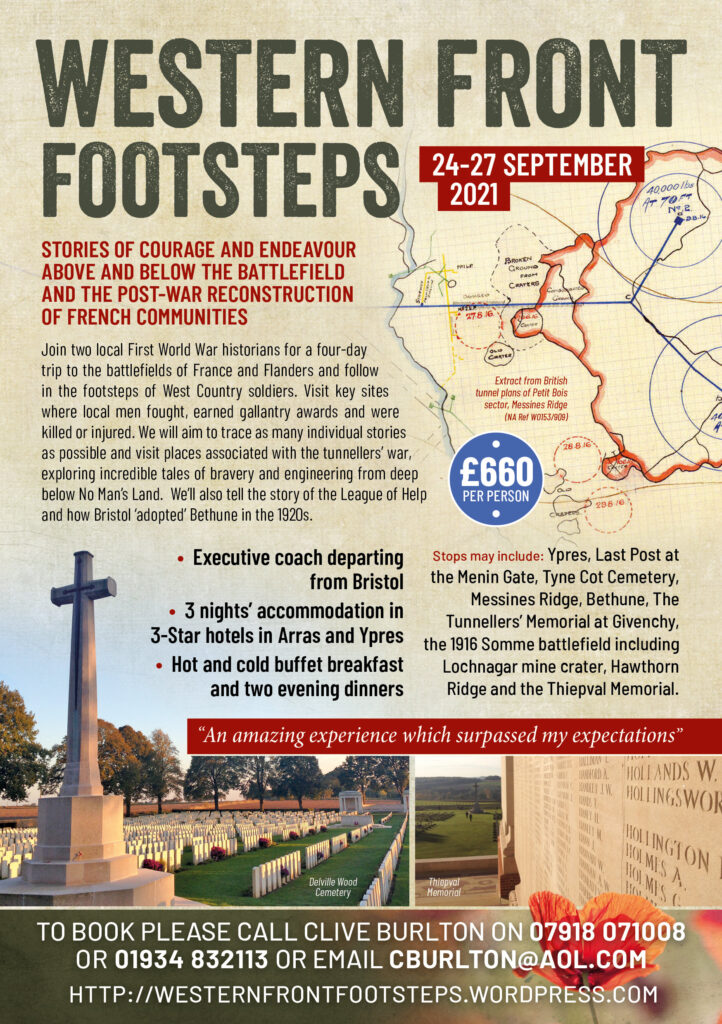
Once again we are travelling with our partners at Bakers Dolphin. The three night, four day tour will visit key sites associated with the West Country. Travelling by executive coach we will depart from Bristol on 24 September and travel to Arras, stopping at sites of interest en route.
The next day will be spent on the 1916 Somme battlefield with a look at the tunnelling exploits at such famous sites as Hawthorn Ridge, La Boisselle, Bois Francais and Carnoy. As ever we will ensure that we stop at key battlefield sites including the Thiepval Memorial.
On 26 September we will journey northward to the sacred Ypres salient and Messines Ridge, a key battleground for the tunnelling war. En route we will visit Bethune and the Tunnellers Memorial at Givenchy-les-la-Bassée for the tale of Sapper William Hackett VC, the only tunneller recipient of the Victoria Cross. Whilst in Ypres we will attend the Last Post ceremony at the Menin Gate. Other key sites around the salient will be explored.
As ever, our tour will cover the stories of relatives of those who join us. Please do send details and we will endeavour to visit individual graves and battlefield sites if time permits.
Accommodation is based at the following 3-star hotels – Holiday Inn Express (Arras) and the Novotel (Ypres). Full details of cost, what is included and contact details to reserve a space can be found on the attached flyer and via our dedicated website: https://westernfrontfootsteps.com/.
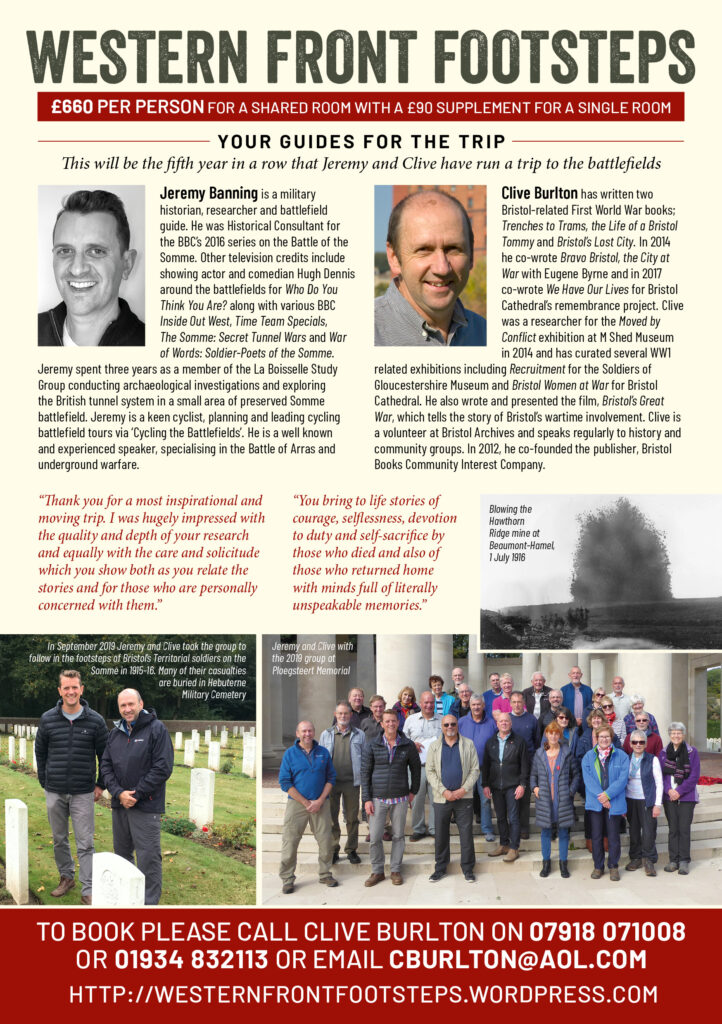
We look forward to you joining us for another wonderful few days following in some Western Front Footsteps…
Following the success of the last three years of Bristol and West Country based battlefield tours organised with fellow historian, Clive Burlton, we are pleased to announce another trip for this coming autumn. This time our focus is not solely actions by units from the West Country but a look at associated stories of the postwar period of battlefield tourism and creation of Commonwealth War Graves Commission cemeteries.

Once again we are travelling with our partners at Bakers Dolphin. The three night, four day tour will visit key sites associated with the West Country. Travelling by executive coach we will depart from Bristol on 27 September and travel to Arras, stopping at sites of interest en route. If time permits we will visit Fresnoy near Arras where the 12th Gloucesters (Bristol’s Own) fought with heavy losses in May 1917.
The next day will be spent on the 1916 Somme battlefield with a look at the Bristol Territorials at Hebuterne and a visit to key battlefield sites including the Thiepval Memorial. On our way down to the Somme we aim to stop at Mory Abbey Military Cemetery to hear a most moving story of a father’s love for his son.
On 29 September we will journey northward to the sacred Ypres salient , the wartime cauldron for so many of Britain’s soldiers. Whilst in Ypres we will attend the Last Post ceremony at the Menin Gate and walk in the footsteps of the 1st Somerset Light Infantry in December 1914 at Ploegsteert (known as Plugstreet to the Tommies). Other key sites around the salient will be explored. Throughout the trip we will be looking at the work of the war artists such as Nash, Levinson and Orpen.
As ever, our tour is based around the stories of relatives of those who join us. Please do send us details and we will endeavour to visit individual graves and battlefield sites.
Accommodation is based at the following 3-star hotels – Holiday Inn Express (Arras) and the Novotel (Ypres). Full details of cost, what is included and contact details to reserve a space can be found on the attached flyer.
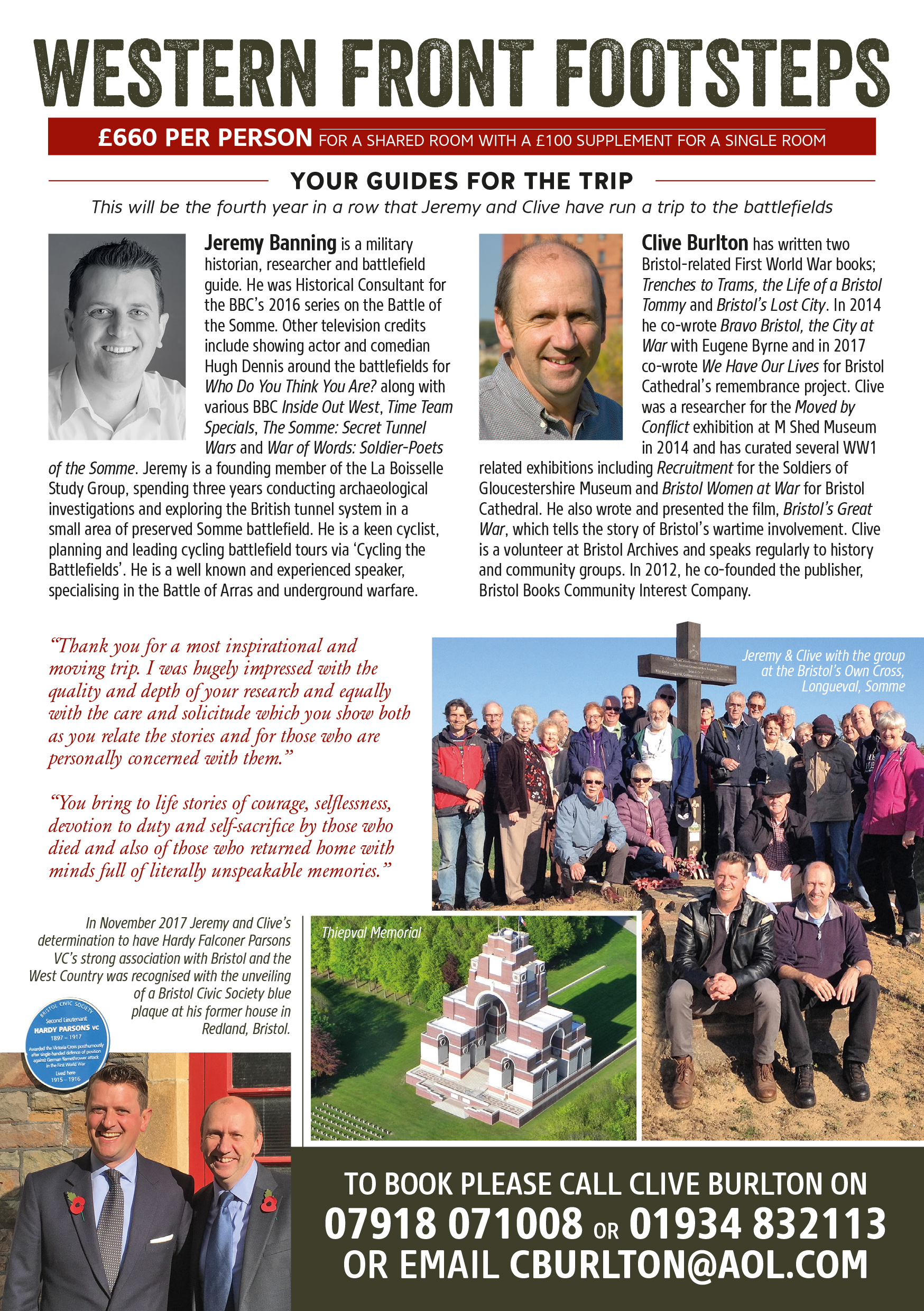
We look forward to you joining us for another wonderful few days following in some Western Front Footsteps…
New Battlefield Tour announced! ‘Western Front Footsteps’ 28 September – 1 October 2018
Following the success of 2016’s ‘Bristol on the Western Front’ and last year’s ‘The West Country at War’ tour trip that I organised with fellow historian, Clive Burlton, we are pleased to announce another trip for this coming autumn.
Stops will cover actions by units from Wiltshire, Somerset and South Wales as well as Bristol. The tour is named ‘Western Front Footsteps’.
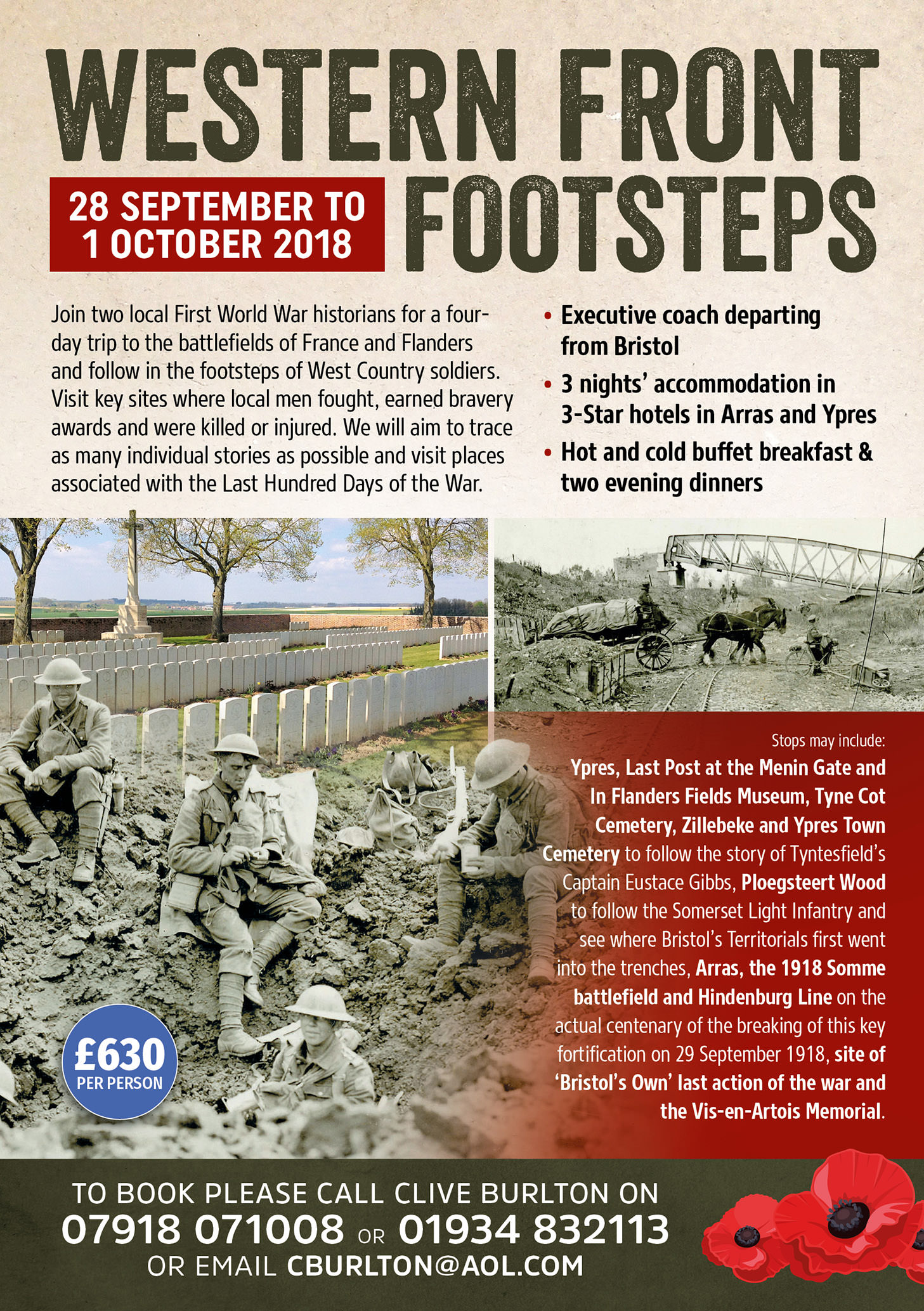
Once again we are travelling with our partners at Bakers Dolphin. The three night, four day tour will visit key sites where soldiers from the West Country fought, earned bravery awards and lost their lives.
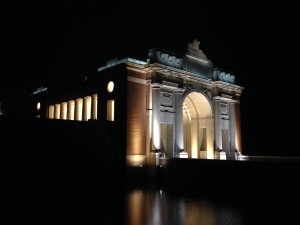
Menin Gate, Ypres
Travelling by executive coach we will depart from Bristol on 28 September and travel to Arras, stopping at sites of interest en route. The next day will be spent on the 1918 Somme battlefield on the centenary of the breaking of the Hindenburg Line – a momentous day that paved the way to allied victory. It is also the centenary of the last assault ever made by the 12th Gloucesters (Bristol’s Own) and we will walk their final attack. It will be special to visit this fascinating battlefield on such a poignant day.
On 30 September we will journey northward to the sacred Ypres salient , the wartime cauldron for so many of Britain’s soldiers. Whilst in Ypres we will attend the Last Post ceremony at the Menin Gate and visit the In Flanders Fields Museum in the Cloth Hall. Our time in Ypres will see us visiting sites around the salient including Ploegsteert (known as Plugstreet to the Tommies) to follow the 1st Somerset Light Infantry in December 1914, see where the Christmas Truce took place and visit the area in which Bristol’s Territorials first went into the trenches.

A key theme of this year’s tour will be looking into the wartime history of the Gibbs family from Tyntesfield (now a National Trust property) – their story is fascinating and heart-rending.

Ypres Cloth Hall – now the location for the In Flanders Fields Museum
Accommodation is based at the following 3-star hotels – Holiday Inn Express (Arras) and the Novotel (Ypres). Full details of cost, what is included and contact details to reserve a space can be found on the attached flyer.
We look forward to you joining us for another wonderful few days following in some Western Front Footsteps!
Following the success of last year’s ‘Bristol on the Western Front’ trip that I organised with fellow historian, Clive Burlton, we are pleased to announce another trip for October 2017.
This year we are broadening the net with less of a Bristolian focus. Stops will cover actions by units from Wiltshire, Somerset and South Wales. As such, we thought it apt to name the tour ‘The West Country at War’.
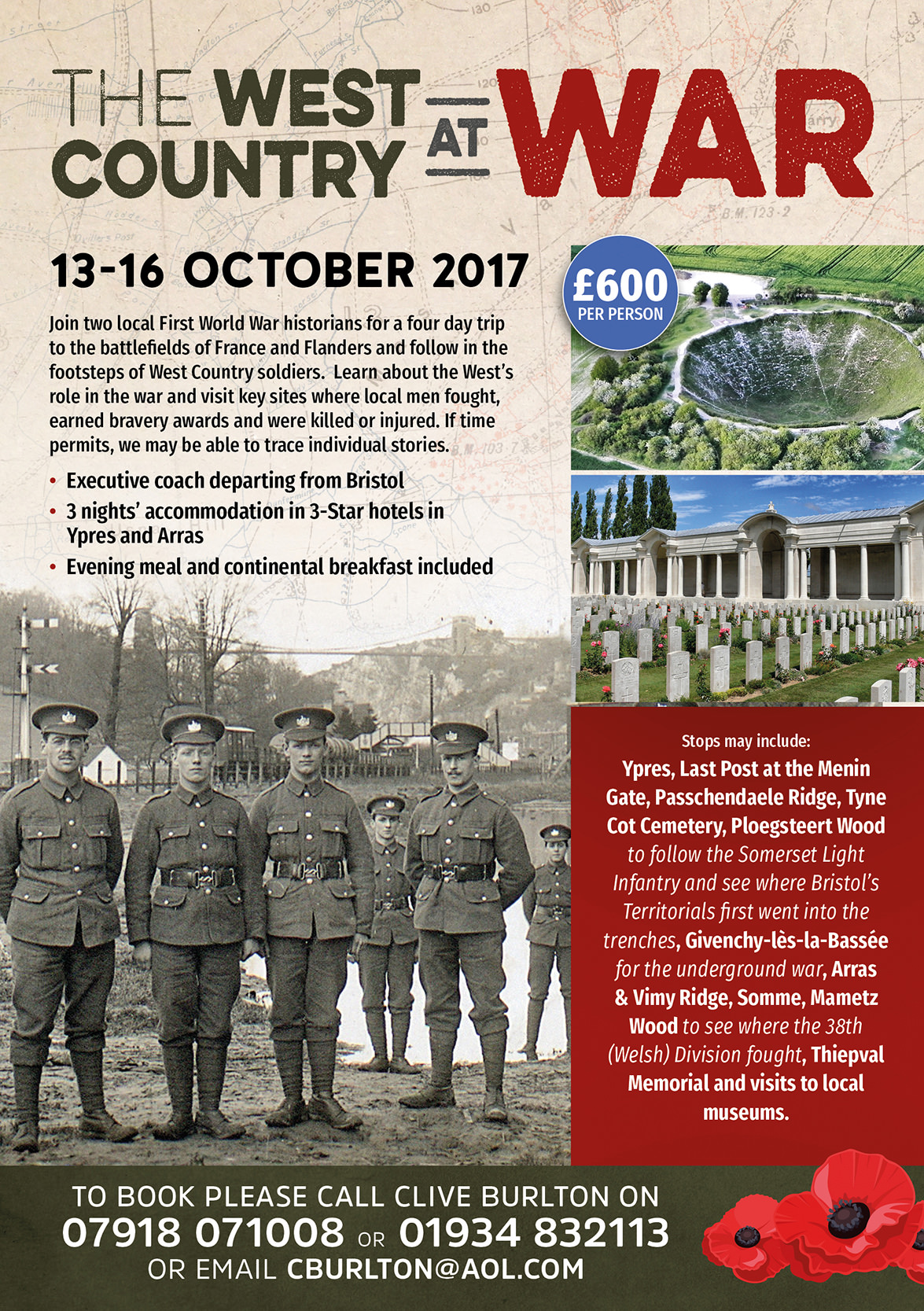
Once again we are travelling with our partners at Bakers Dolphin. The three night, four day tour will visit key sites where soldiers from the West Country fought, earned bravery awards and lost their lives.

Menin Gate, Ypres
Travelling by executive coach we will depart from Bristol on 13 October and travel to Arras, stopping at sites of interest en route. The next day will be spent on the Somme battlefields, visiting some well known (Mametz Wood) as well as lesser known sites on the 1917 battlefield!
The following day sees us journey northward to the sacred Ypres salient , the wartime cauldron for so many of Britain’s soldiers. Whilst in Ypres we will attend the Last Post ceremony at the Menin Gate. Our time in Ypres will see us visiting sites around the salient including Ploegsteert (known as Plugstreet to the Tommies) to follow the 1st Somerset Light Infantry in December 1914, see where the Christmas Truce took place and visit the area in which Bristol’s Territorials first went into the trenches.
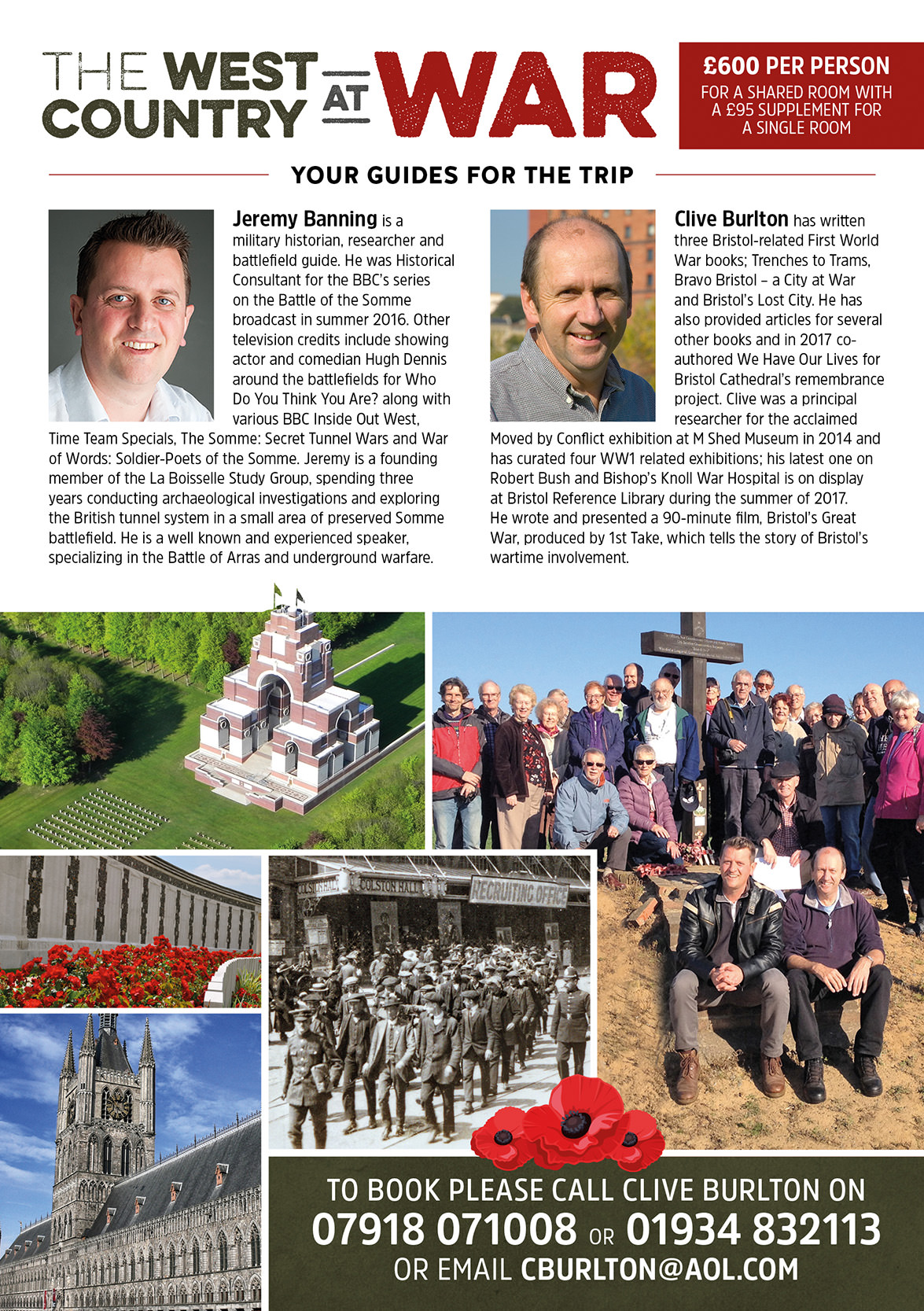
Accommodation is based at the following 3-star hotels – Holiday Inn Express (Arras) and the Novotel (Ypres). Evening meal and continental breakfast are included. If there is demand then Clive and I are happy to give evening talks. Last year we were heartened by the almost 100% attendance rate at our talks by those who had already had a long day on the battlefields.
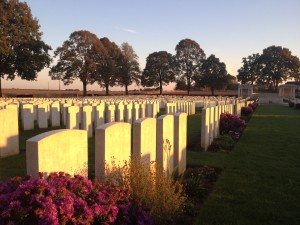
Delville Wood Cemetery, Somme
Full details of cost and contact details to reserve a space can be found on the attached flyer.
We look forward to you joining us for another wonderful few days!
Through my work for Historic England I have come to know many stories of Bristol’s soldiers in the war. A few years ago I met Clive Burlton, a local historian and writer with a superb knowledge of Bristol’s role in the war. Clive and I have given talks at the same venue on a number of occasions and over a post-talk beer often discussed the possibility of running a coach tour to the battlefields for people who want to find out more about Bristol’s wartime story.
So, here we are! I am pleased to announce that, with our partners at Bakers Dolphin, we are running a special tour:
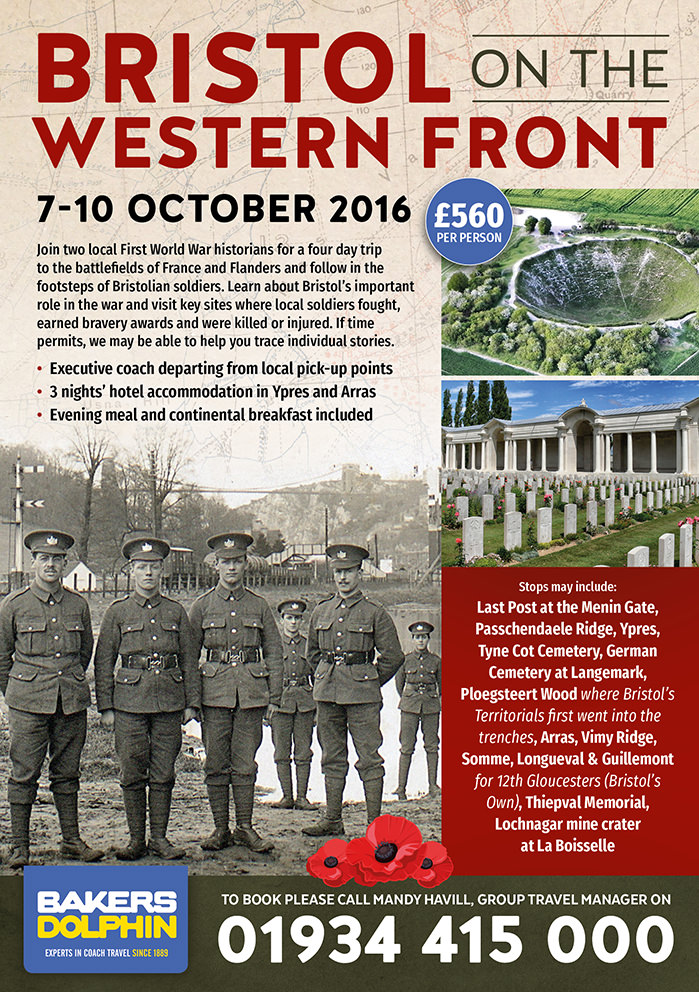
The three night, four day tour will visit key sites where soldiers from Bristol fought, earned bravery awards and lost their lives.
Travelling by executive coach we will depart from Bristol on 7 October and travel to the sacred Ypres salient, the wartime cauldron for so many of Britain’s soldiers. That evening we will attend the Last Post ceremony at the Menin Gate that night. The next day sees us visiting sites around the salient including Ploegsteert (known as Plugstreet to the Tommies) to see where Bristol’s Territorials first went into the trenches before heading south to Arras, our base for the remainder of the trip.
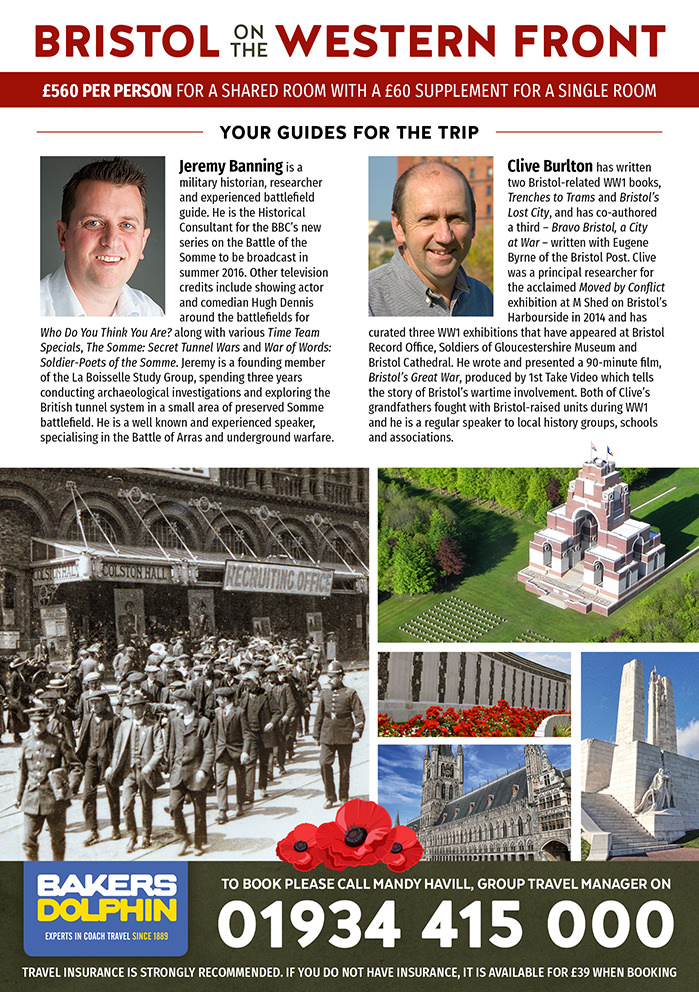
On Saturday 9th we will spend a day on the Somme battlefields, visiting key sites such as Newfoundland Memorial Park, Thiepval Memorial and the Lochnagar Mine Crater. We will also look at the story of the 12th Gloucesters (Bristol’s Own) in their actions at Longueval and Guillemont. The morning of our final day will be spent on the Arras battlefield, looking at the events surrounding the 12th Gloucesters (Bristol’s Own) action at Fresnoy on 8-9 May 1917.
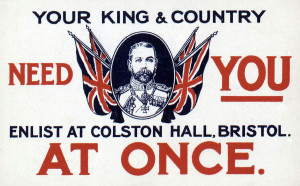
Wartime recruiting card for local soldiers to enlist at Colston Hall, Bristol
Accommodation is based at the following 3-star hotels – Novotel (Ypres) and Holiday Inn Express (Arras). Evening meal and continental breakfast are included. If there is demand then I will give a talk on the tunnellers’ war after dinner one night and Clive on a particular Bristol story the next night.
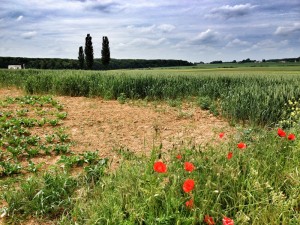
Guillemont – 12th Gloucesters (Bristol’s Own) attacked close to here on 3 September 1916
Individual visits can be accommodated if time permits and locations are close by.
The cost is a competitive £560pp, based on a shared room. For more details please contact me HERE or Mandy Havill, Group Travel Manager on 01934 415 000. I look forward to meeting you on the tour and sharing in Bristol’s fascinating history.
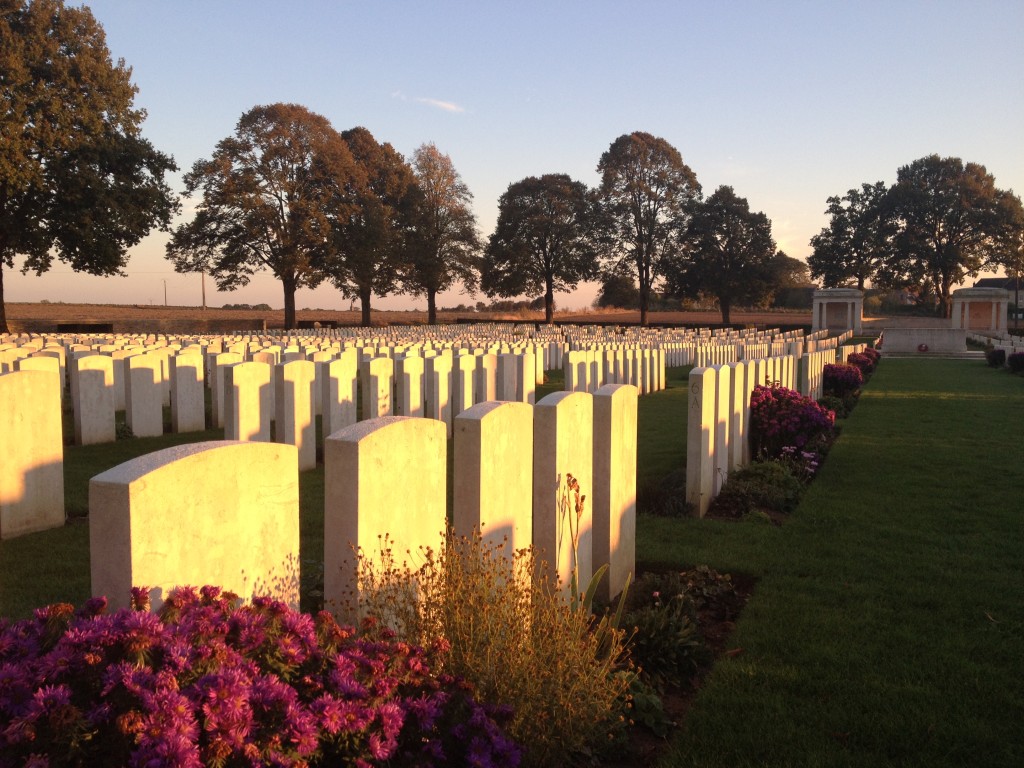
Delville Wood Cemetery, Somme
Earlier this month I finished an extraordinary week’s work at La Boisselle followed by four days guiding a group of writers around the Somme and Arras battlefields. Last year I had taken Vanessa Gebbie on a bespoke tour following in the footsteps of the 14th Battalion Welsh Regiment (Swansea Pals). She had been extolling the virtues of the battlefields ever since and had cajoled other writers to join her for a few days away.
Somme
After picking up my passengers and hire car in Lille we headed south to the Somme. Our first port of call was to the Glory Hole at La Boisselle where I was able to take my group underground. BBC News were covering our work on site that day and it was exciting to stand at the top of W Shaft and hear the filming taking place below for that night’s Six O’Clock News. Vanessa has written about this on her blog here. After a visit to the Lochnagar Crater we stopped at Becourt Military Cemetery and Norfolk Cemetery en route to our comfortable accommodation at Chavasse Farm, Hardecourt-aux-Bois.
“I can’t tell you what an amazing time I had on our trip. You are a natural – to call you either a historian or a tour guide is to miss the point entirely, I think. You brought it alive for us, you animated the land, the people, the history, in a way I don’t think I’ve ever experienced. There wasn’t one minute when you were talking where I was bored, where I zoned out. You made me want to know everything. And more than that, you inspired me to think about identity, nationality, what I might be prepared to die for.” Tania Hershman
The next day was spent on the Somme starting in the southern sector at the junction of British & French forces between Maricourt & Montauban. Stops that morning included Suzanne Communal Cemetery Extension to visit the graves of 18th Manchester Regiment men killed in May 1916 when German mortar fire blocked their mine shaft at Maricourt, the Carnoy crater field where I explained about the use of the Livens Large Gallery Flame Projector on 1 July 1916, Devonshire Cemetery at Mametz and then down to the impressive Red Dragon of the 38th (Welsh) Division Memorial at Mametz Wood. Despite heavy rain most of us had a walk up the slope from Death Valley to look at positions occupied by the 11th South Wales Borders and 16th Welsh in their unsuccessful 7 July attack on the Hammerhead. After a coffee and change of clothes we headed back out. Stops included Guillemont Road Cemetery, High Wood and the Nine Brave Men (82 Field Company RE) memorial in Bazentin-le-Petit before lunch at Old Blighty Tea Rooms, La Boisselle.
The remains of the afternoon was spent at Aveluy Communal Cemetery Extension, Mash Valley and the Thiepval Memorial to the Missing of the Somme before stopping at Flatiron Copse Cemetery, Mametz on our way back.
Over dinner that night I learnt one of my party had a relative with the 3rd Coldstream Guards who had been killed in the Battle of Flers-Courcelette on 15 September 1916. Our first stop the next morning was on the road between Ginchy and Lesboeufs to look at the starting positions for the attack. Guardsman Ernest Saye is commemorated on the Thiepval Memorial so there was a chance his remains were still lying in the fields before us.
We paid our respects at the Guards Division Memorial, Lesboeufs before a stop specifically requested by Vanessa at Morval British Cemetery. This quiet spot contains 38th (Welsh) Division casualties killed in the capture of Morval on 31 August/1 September 1918. After stops at the Cedric Dickens Cross and Delville Wood Cemetery & Memorial we headed north of the Roman Road to Thiepval to pick up where we had left off the previous day. Stops included the Ulster Tower Newfoundland Memorial Park, the Sunken Lane at Beaumont Hamel and then over the Redan Ridge for a picnic lunch in the majesty of at Serre Road Cemetery No.2 where the Somme part of our tour ended.
Arras
En route north we stopped at Ayette Indian & Chinese Cemetery before arriving at Neuville-Vitasse Road Cemetery, Neuville-Vitasse where I set the scene for the Arras offensive. The elevated position offers a fine viewpoint from which to show the southern sector of the battlefield with Monchy-le-Preux, Henin Hill and the route of the Hindenburg Line clear to see.
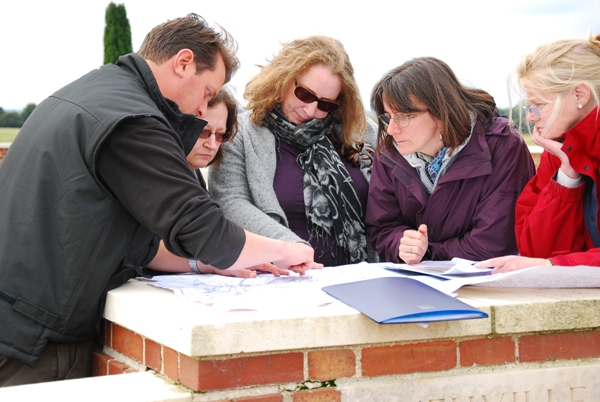
Poring over maps of the Arras battlefield at Neuville-Vitasse Road Cemetery. Thanks to Vanessa Gebbie for her permission to use this image.
After a visit to Cojeul British Cemetery to pay our respects at the grave of two Victoria Cross winners, Private Horace Waller and Captain Arthur Henderson we headed up to the open windswept ground of Henin Hill where we had a good look around a surviving German ‘mebu’ concrete pillbox, part of the Hindenburg Line defences in the area. After repeatedly getting in and out of the car we were keen to stretch the legs and so took a walk to Heninel-Croisilles Road Cemetery where I read the poet Siegfried Sassoon’s account of being wounded nearby. We then walked down to Rookery Cemetery and Cuckoo Passage Cemetery.
Our next stop was on Wancourt Ridge outside Wancourt British Cemetery where I read John Glubb’s detailed account of the bridging work undertaken by 7 Field Company RE across the River Cojeul in the valley before us on 23-25 April 1917. The landscape is wonderfully easy to match up to Glubb’s descriptions and offers the chance to imagine the scene 95 years ago. Afterwards some of us walked up to the site of Wancourt Tower. Our final stop of the day was the rarely visited but rather beautiful Vis-en-Artois Memorial. One of our party Caroline had a relative commemorated on the panels. Percy Honeybill, 1st King’s Own (Royal Lancaster Regiment) was killed on 2 September 1918 attacking the Drocourt- Quéant defences.
Our final day saw us head to Arras for a croissant and coffee breakfast in the Petite Place before a visit to the Arras Memorial to the Missing and Faubourg-d’Amiens Cemetery. We then headed out along the Arras-Cambrai road to find the spot between Guémappe and Cherisy where Third Army Panorama No. 556 was taken on 6 May 1917. Standing close to the spot where the image was taken it offers an ideal opportunity to visualise battlefield conditions in May 1917. Our next stop was at Kestrel Copse to see the new cross for Captain David Hirsch VC. We then headed north to Monchy-le-Preux where I explained the magnificent action which resulted in the capture of the village on 11 April 1917. One of our party’s grandfather had served in the Essex Yeomanry. I was able to show her Orange Hill and the fields which her grandfather would have galloped across on 11 April 1917. We then headed up Infantry Hill where I told of the disastrous Newfoundland and Essex Regiment attack on 14 April and the subsequent action by the “Men who saved Monchy”.
Crossing the River Scarpe to Roeux, we visited the site of dreaded Chemical Works, now a benign Carrefour supermarket and garage. I always find it a pity that there is nothing on the site to show the ferocity of the fighting here in April and May 1917. Lunch was taken in Sunken Lane Cemetery at Fampoux (written about here by Vanessa Gebbie ). We discussed the terrible fighting for Roeux and the 11 April attack by the 2nd Seaforth Highlanders and 1st Royal Irish Fusiliers. After visiting Gavrelle we headed north to Vimy Ridge, visiting the trenches and Walter Allward’s masterpiece, the Vimy Memorial where we bumped into my brother Mark guiding a group. What a small place the battlefields are sometimes! There followed an interesting journey back to Lille Europe station where the car was returned in a rather muddier state than it had been when picked up.
My thanks to Vanessa, Tania, Zoe, Angela and Caroline for being such good company and making the trip such a delight. I am already planning the itinerary for 2013!
“Thank you is really an inadequate word to convey my feelings about the weekend. I still feel as if I’ve been to a different place and had my life changed. I’m not quite sure how you managed it but it felt as if you really took us back in time to 1914, 1916, 1917 and 1918 and that we were standing alongside the men waiting for the whistles to send them over the top and later dragging or rolling themselves back to the safety of their trenches. I thought I knew a bit about the First World War having done a history degree and having read the poetry. At an intellectual level I suppose I did know about the war but emotionally I had no idea what it was like for the men and that experience was what you gave us with the maps, the panoramas and all the stories. Over the last few days they lived and breathed again. It’s difficult to pick out my favourite moments as everything felt like a highlight. I can’t remember if it was Tania or Zoe who said they’d never before come across a guide who didn’t bore them for a second. Actually ‘guide’ isn’t the right word – the ‘expert’ comes closer but also the ‘enthusiast’ brimming over with things you wanted to share.” Caroline Davies

